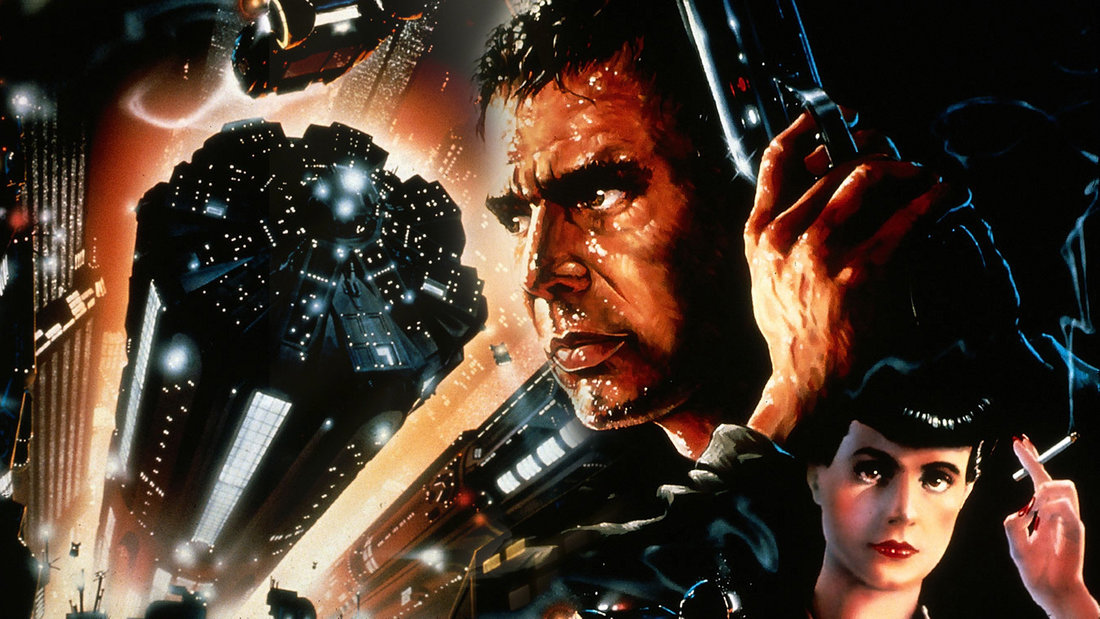The original Blade Runner is a very good movie. I knew that at its first release back in 1982. Watching it again in 2017, I think I underrated it. Here’s what struck me on a second viewing:
PRESCIENCE
1. How extraordinarily prescient this movie is. In the 45 years since its first release, climate degradation has become a real thing, not just a sci-fi writer’s speculation. The scenes of gloom, smog and incessant rain seem all too real, all too “just around the corner”. The story is told within the matrix of a Beijing/L.A. nightmare.
2. How prescient too to have Chinese as the dominant language of commerce in this city which I take to be American. Back in 1982, I don’t think it was clear to many what a political-economic power China was to become. Good guess!
3. Prescient also is the vision of a world which clings stubbornly to the last vestiges of capitalism despite global climatic collapse. Neon signs for Coca Cola, Atari, and other multi-nationals still penetrate the thick smog our blade runner must navigate through.
4. The technology imagined for 2017 was a little off, which is absolutely to be expected. No flying cars yet (though driverless cars are imminent) and no smart phones in sight, but who could ever have predicted the smart phone? Really, did anyone see that coming?
1. The gloom that pervades every scene in this film is remarkable, most remarkable, I think, for its unwavering consistency. It is always there, infuses every seen, indoors and out.
2. The rain. Oh, the rain! It is unrelenting. It seems to drip down the faces of every character again and again at key moments. In many contexts, rain can be a cleansing force, a force of renewal, but not here. Here the rain washes away all hope. It is force with no emotion, no sympathy, undermining every human ambition.
PACING & CHARACTER
1. In a movie so dominated by mood and atmosphere, I might have expected the pace to flag in places but, for me, it did not. Even the so-called static scenes, dominated by talking heads around a table, are saturated with tension. The characters are all like tightly wound springs, ready to explode at any moment.
2. Roy Batty has to be one of the scariest, yet compelling, characters ever to grace a movie screen. His every word and facial expression reek with danger. He speaks with exaggerated slowness—as if at each moment he is making a choice whether to use this word or that word—and each choice might result in a different outcome for the scene. He is a replicant with S.S. credentials, a Byronic hero, single-minded, yet complex. His final action is to save a man who has been his mortal enemy, only so that he might deliver his final words: “And so now we die.” Then his head falls to his chest and the incessant rain beats down over him. It is a death scene worthy of Hamlet.
4. Rachael, the replicant, who at first doesn’t realize she is a replicant, helps the viewer cross the emotional bridge from replicant to human, blurring any division we might want to make between them. Her emotions, her tears, seem genuine and her ability to love as a human does, unquestioned.
SUMMARY
How amazingly well this movie holds up. And how lovely to see Harrison Ford not flying the Millennium Falcon. The Blade Runner world is flawless and consistent in its depiction. The movie’s plot is fine-tuned with no superfluous story lines. Its characters are varied, many of them difficult to shake from your memory. Blade Runner is truly a “classic” in a genre that cannot boast many.
Rutger Hauer, whose portrayal of Roy Batty deserved an Academy Award in my opinion, sums things up nicely with these words: "Blade Runner needs no explanation. It just [is]. All of the best. There is nothing like it. To be part of a real masterpiece which changed the world's thinking. It's awesome."






